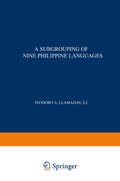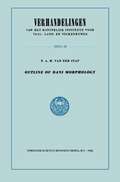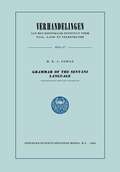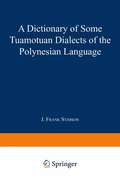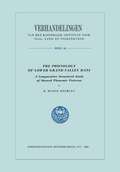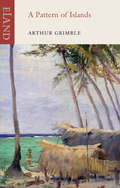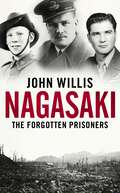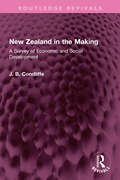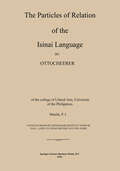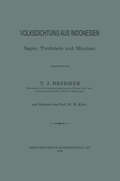- Table View
- List View
A Subgrouping of Nine Philippine Languages
by NA LlamzonBY J. C. ANCEAUX Since the appearance of Brugmann's famous article on the relation ships of the Indo-European languages in 1884, the subject of sub grouping of languages as a methodological problem has been raised only occasionally. To this apparent lack of interest in a major point in comparative linguistics several causes can be assigned. One of them is that a consensus has been reached about the main outlines of the family-tree for the language-family which has received more attention than any other: the Indo-European. Another explanation is that for most of the branches of this family historical materials are available which have proved very valuable for the reconstruction of the inter mediate stages between the proto-Ianguage ande the modem languages. For a few branches only has the problem of subgrouping been a matter for discussion (e.g. Germanic). Special attention, however, could be expected from those who started to apply the comparative methods to other language-families. This attention did come forward, though not immediately, because linguists first had to deal with the problems of proving the existence of the family in question and deciding which languages belonged to it. For the Austronesian languages serious attemps to arrive at a lin guistic classification started relatively late. Certain cases of closer relationships were obvious enough to be recognized very early ( e.g.
Outline of Dani Morphology (Verhandelingen van het Koninklijk Instituut voor Taal-, Land- en Volkenkunde #48)
by P.A.M. van van der StapGrammar of the Sentani Language (Verhandelingen van het Koninklijk Instituut voor Taal-, Land- en Volkenkunde #47)
by Hendrik Karel CowanA Critical Survey of Studies on the Languages of Java and Madura: Bibliographical Series 7 (Koninklijk Instituut voor Taal-, Land- en Volkenkunde #3)
by E.M. UhlenbeckAt the completion of this critical bibliography which forms another step in the direction of the realization of the bibliographical project inaugurated in 1955 by Dr. Voorhoeve's survey of the languages of Sumatra, I acknowledge with gratitude the valuable assistance received from various people. I am indebted to my colleagues Prof. Dr. G. W. J. Drewes, Dr. J. Noorduyn, Dr. Th. Pigeaud, Prof. Dr. A. Teeuw and Dr. P. Voorhoeve, who read all or part of the manuscript and who generously put their extensive knowledge of the Java languages at my disposal. Heartfelt thanks are due to Mr. B. J. Hoff and Mr. A. G. Sciarone, both members of my staff, who verified many of the biblio graphical details. I am grateful to the library of the University of Leiden and to the library of the Institute in The Hague because of their readiness in giving me all the facilities I needed for the preparation of this book. Most useful was the cordial assistance received from my colleague Prof. Dr. P. E. de Josselin de Jong, who spent much time correcting the many imperfections of my English text, which greatly promoted the readability of the narrative sections of this survey.
A Dictionary of Some Tuamotuan Dialects of the Polynesian Language
by J.F. Stimson Donald Stanley MarshallThe Phonology of Lower Grand Valley Dani: A Comparative Structural Study of Skewed Phonemic Patterns (Verhandelingen van het Koninklijk Instituut voor Taal-, Land- en Volkenkunde)
by H. Myron BromleyA Pattern of Islands (Ulverscroft Large Print Ser.)
by Arthur GrimbleArthur Grimble was sent to the Gilbert and Ellice islands as a colonial administrator in the twilight of the Edwardian era. He lived there for the next twenty-five years and developed a rare passion for the language, life and landscape of the place. Fortunately his island neighbours, a fascinating cast of fishermen, sorcerers, poets and fighters, began to trust this charming, happy and energetic young man, and shared with him their treasury of stories from the days when warfare was endemic and magic an essential part of everyday life. A Pattern of Islands is a rich and complex cultural history of the dances and legends, rituals, spells and way of life of the islands. It is also a riproaring adventure story. Grimble learns to spear hungry sharks, to negotiate fearsome reefs and, on one terrifying day, is used as human bait to catch a giant squid.
Nagasaki: The Forgotten Prisoners
by John WillisThis is one of the most remarkable untold stories of the Second World war. At 11.02 am on an August morning in 1945 America dropped the world's most powerful atomic bomb on the Japanese port city of Nagasaki. The most European city in Japan was flattened to the ground 'as if it had been swept aside by a broom'. More than 70,000 Japanese were killed. At the time, hundreds of Allied prisoners of war were working close to the bomb's detonation point, as forced labourers in the shipyards and foundries of Nagasaki.These men, from the Dales of Yorkshire and the dusty outback of Australia, from the fields of Holland and the remote towns of Texas, had already endured an extraordinary lottery of life and death that had changed their lives forever. They had lived through nearly four years of malnutrition, disease, and brutality. Now their prison home was the target of America's second atomic bomb.In one of the greatest survival stories of the Second World War, we trace their astonishing experiences back to bloody battles in the Malayan jungle, before the dramatic fall of Fortress Singapore, the mighty symbol of the British Empire. This abject capitulation was followed by surrender in Java and elsewhere in the East, condemning the captives to years of cruel imprisonment by the Japanese. Their lives grew evermore perilous when thousands of prisoners were shipped off to build the infamous Thai-Burma Railway, including the Bridge on the River Kwai. If that was not harsh enough, POWs were then transported to Japan in the overcrowded holds of what were called hell ships. These rusty buckets were regularly sunk by Allied submarines, and thousands of prisoners lived through unimaginable horror, adrift on the ocean for days. Some still had to endure the final supreme test, the world's second atomic bomb.The prisoners in Nagasaki were eyewitnesses to one of the most significant events in modern history but writing notes or diaries in a Japanese prison camp was dangerous. To avoid detection, one Allied prisoner buried his notes in the grave of a fellow POW to be reclaimed after the war, another wrote his diary in Irish. Now, using unpublished and rarely seen notes, interviews, and memoirs, this unique book weaves together a powerful chorus of voices to paint a vivid picture of defeat, endurance, and survival against astonishing odds.
New Zealand in the Making: A Survey of Economic and Social Development (Routledge Revivals)
by J. B. CondliffeFirst published in 1930, New Zealand in the Making is an economic history of the democratic experiments in New Zealand. The geography, population, government ownership of public utilities, compulsory arbitration, pensions and all other factors have been covered in detail. The book will be of interest to anyone keen on learning about New Zealand as well as to students of economy, history, agriculture, and government.
New Zealand in the Making: A Survey of Economic and Social Development (Routledge Revivals)
by J. B. CondliffeFirst published in 1930, New Zealand in the Making is an economic history of the democratic experiments in New Zealand. The geography, population, government ownership of public utilities, compulsory arbitration, pensions and all other factors have been covered in detail. The book will be of interest to anyone keen on learning about New Zealand as well as to students of economy, history, agriculture, and government.
